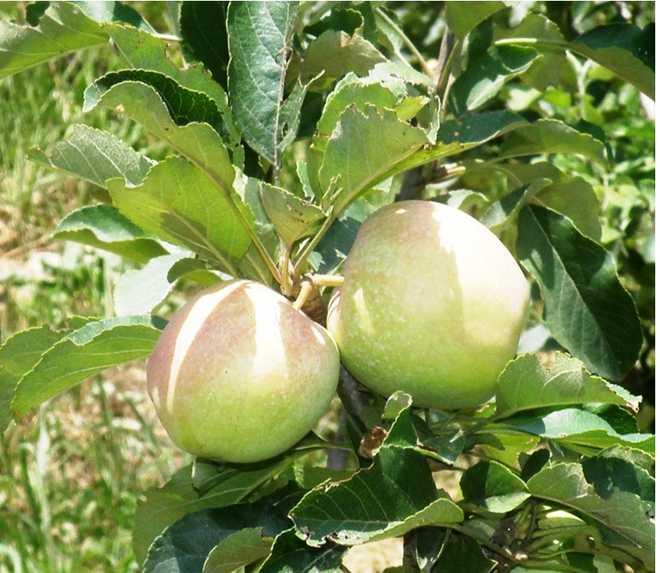Dr Chiranjit Parmar
Like other places, the climate of Himachal Pradesh is also experiencing a change due to global warming. Consequently, apple has stopped performing well in many traditional apple growing areas. So, people in lower areas have now started looking for alternatives.
For example, areas around Kullu town including Bajaura, Nagwain and Bhuntar among others are no more apple growing areas now. People are shifting to other fruits like plum, pomegranate, kiwi etc., which do not require much cold during winter and can bear crops at places with milder winter.
Is it going to be a permanent feature of such areas? Will areas like Kullu, which used to be once famous for apples, never be able to grow apples now? Most people think so. But it is not correct. Apples can still be grown not only in these areas, but even in areas where winter is even milder than these places. There are apple varieties now, whose chilling requirement is much less than the traditional varieties and can bear fruits at places with very less winter.
Phenomenon of chilling in apples
Nature has a made a provision for protecting these plants from cold during winter injury. As soon as the cold season starts, these plants enter into a phase of dormancy, which is indicated by leaf fall beginning in autumn. These dormant leafless plants remain unaffected by low temperatures. They resume growth only after the winter is over.
This process of dormancy is initiated and then ended by some hormonal changes within the tree bodies. For coming out of the dormancy (or for letting those hormonal changes to take place), a tree must get exposed to a specific duration low temperature below 7°C. This exposure is known as “chilling requirement” and its duration of exposure is called “chilling hours”. Most traditional apple varieties have a chilling requirement of 700 to 1,200 hours. The chilling requirement varies with variety. The higher chilling requirement varieties must be planted in colder areas otherwise these will not fruit.
Apple varieties for warmer areas
Since long, fruit scientists all over the world have been working on extending the area of apple cultivation by developing varieties that can be cultivated in mild winter areas. Fruit breeders in Israel were the first to come out with such varieties. Research on this is still on at their Volcani Institute at Rehovot. Trials on these and other low-chilling apple varieties have been going on in India for the past few decades. The following varieties have now been confirmed to grow and fruit in relatively warmer areas, not considered suitable for apple cultivation earlier:
- Anna: This variety was bred in Israel in the ’50s. It requires less than 300 hours of chilling and can therefore be planted in all low hill areas of Himachal Pradesh. The fruits look somewhat like Golden Delicious.
- Dorsett Golden: This variety was bred by Mrs Dorsett of Bahamas. It also looks like Golden Delicious. This variety also requires less than 300 hours of chilling and is bearing fruits at many places in HP.
- Hariman or HRMN 99: This is a wonder apple which can grow even in the plains. It was developed by Hariman Sharma, a Bilaspur farmer, with no formal training in fruit growing. It was a chance seedling noticed by Hariman, who multiplied it further. It is a very early variety. The fruits ripen in June. Hariman fruits, however, have a short shelf life and have to be sold in 8-10 days. Trees of this variety have been planted and fruiting successfully at many places outside Himachal, including Rashtrapati Bhavan, Delhi. Hariman is self-fruitful and does not require any polliniser. However, in case of Anna and Dorsett Golden the fruit set is said to be improved if trees both varieties are planted together.
(Writer is a Mandi-based fruit scientist)
Unlock Exclusive Insights with The Tribune Premium
Take your experience further with Premium access.
Thought-provoking Opinions, Expert Analysis, In-depth Insights and other Member Only Benefits
Already a Member? Sign In Now










